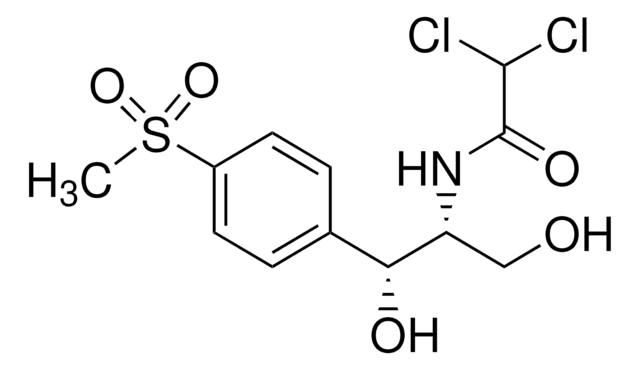모든 사진(2)
About This Item
Linear Formula:
NH2CH2COOH
CAS Number:
Molecular Weight:
75.07
Beilstein:
635782
EC Number:
MDL number:
UNSPSC 코드:
12352209
eCl@ss:
32160406
NACRES:
NA.25
추천 제품
생물학적 소스
non-animal source
Quality Level
분석
≥98.5%
양식
crystalline powder
기술
cell culture | mammalian: suitable
불순물
endotoxin, heavy metals, trace metals, residual solvents, tested
pH
5.9-6.4
pKa(25 °C)
(1) 2.35, (2) 9.60
2.35
mp
240 °C (dec.) (lit.)
solubility
H2O: 100 mg/mL
UV 흡수
λ: 260 nm Amax: ≤0.04
λ: 260 nm Amax: -0.006
λ: 280 nm Amax: ≤0.04
λ: 280 nm Amax: -0.003
적합성
suitable for manufacturing use
응용 분야
pharmaceutical (small molecule)
외래 활성
cytotoxicity, tested
SMILES string
NCC(O)=O
InChI
1S/C2H5NO2/c3-1-2(4)5/h1,3H2,(H,4,5)
InChI key
DHMQDGOQFOQNFH-UHFFFAOYSA-N
유전자 정보
rat ... Grin2a(24409)
유사한 제품을 찾으십니까? 방문 제품 비교 안내
일반 설명
Our SAFC® portfolio of high-quality raw materials for use in biopharmaceutical processing withstands strict quality control procedures plus the documentation and expertise to help our customers meet requirements as defined by the M-Clarity Program.
M-Clarity Program
Our comprehensive portfolio of upstream process chemicals not only provides biopharmaceutical manufacturers with high-quality raw materials for production of classical and novel therapies, but also helps them get to market faster and simplify regulatory challenges. Trust us to deliver supply chain transparency and reliable sourcing around the globe, streamlining your product qualification with best-in-class regulatory support and service.
M-Clarity Program
Our comprehensive portfolio of upstream process chemicals not only provides biopharmaceutical manufacturers with high-quality raw materials for production of classical and novel therapies, but also helps them get to market faster and simplify regulatory challenges. Trust us to deliver supply chain transparency and reliable sourcing around the globe, streamlining your product qualification with best-in-class regulatory support and service.
To request the documentation for this product, please contact Customer Support and select ‘Product Documentation′. Please note that access to the documentation for this product requires a confidentiality disclosure agreement.
애플리케이션
Glycine is a non-essential amino acid. It is the simplest of the amino acids and plays various roles in biology. It is structurally unique among the biological amino acids in that it does not have an asymmetric center, and thus is not chiral. It is commonly used as a cell culture media component for the commercial biomanufacture of therapeutic recombinant proteins and monoclonal antibodies.
생화학적/생리학적 작용
Inhibitory neurotransmitter in spinal cord, allosteric regulator of NMDA receptors.
법적 정보
SAFC is a registered trademark of Merck KGaA, Darmstadt, Germany
Storage Class Code
13 - Non Combustible Solids
WGK
WGK 1
개인 보호 장비
Eyeshields, Gloves, type N95 (US)
이미 열람한 고객
A Sundqvist et al.
Oncogene, 32(31), 3606-3615 (2012-08-29)
Deregulation of the transforming growth factor β (TGFβ) signal transduction cascade is functionally linked to cancer. In early phases, TGFβ acts as a tumor suppressor by inhibiting tumor cell proliferation, whereas in late phases, it can act as a tumor
Alexander Carvajal-González et al.
Brain : a journal of neurology, 137(Pt 8), 2178-2192 (2014-06-22)
The clinical associations of glycine receptor antibodies have not yet been described fully. We identified prospectively 52 antibody-positive patients and collated their clinical features, investigations and immunotherapy responses. Serum glycine receptor antibody endpoint titres ranged from 1:20 to 1:60 000.
Zoé Husson et al.
The Journal of neuroscience : the official journal of the Society for Neuroscience, 34(28), 9418-9431 (2014-07-11)
The principal neurons of the cerebellar nuclei (CN), the sole output of the olivo-cerebellar system, receive a massive inhibitory input from Purkinje cells (PCs) of the cerebellar cortex. Morphological evidence suggests that CN principal cells are also contacted by inhibitory
Bethany L Johnson-Kerner et al.
Human molecular genetics, 24(5), 1420-1431 (2014-11-16)
Giant axonal neuropathy (GAN) is a progressive neurodegenerative disease caused by autosomal recessive mutations in the GAN gene resulting in a loss of a ubiquitously expressed protein, gigaxonin. Gene replacement therapy is a promising strategy for treatment of the disease;
Viviana Meraviglia et al.
Journal of molecular and cellular cardiology, 87, 54-64 (2015-08-13)
Communication between cardiomyocytes depends upon gap junctions (GJ). Previous studies have demonstrated that electrical stimulation induces GJ remodeling and modifies histone acetylase (HAT) and deacetylase (HDAC) activities, although these two results have not been linked. The aim of this work
자사의 과학자팀은 생명 과학, 재료 과학, 화학 합성, 크로마토그래피, 분석 및 기타 많은 영역을 포함한 모든 과학 분야에 경험이 있습니다..
고객지원팀으로 연락바랍니다.




